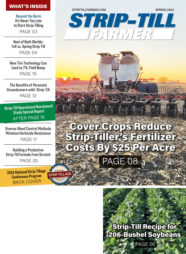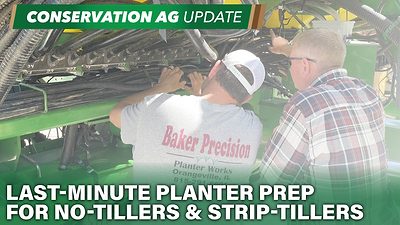Nutrient management decisions can become difficult when land tenure comes into play. While the soil is typically thought of as a “bank” that stores nutrients such as phosphorus (P) and potassium (K), the bank analogy isn’t completely accurate. You don’t always get back what is put into the soil. Also, with short-term land tenure, it doesn’t make sense to greatly increase soil test values if it will benefit another renter on the ground at a later date.
What is Your Attitude Towards Risk?
Soil tests for P and K help farmers understand how likely it is that a fertilizer application will increase crop yield. As soil test values increase towards what we call the critical level the need to apply fertilizer to achieve optimal yield should be low.
It should be noted that some people consider the critical level to be at 95% of maximum yield while others consider it to be at 100%. The advantage of targeting soil tests at 95% of maximum yield is that there is still a chance the fertilizer applied will increase yield and return something on the investment. Fertilizer application at or beyond 100% is more of an “insurance policy” for maximum yield potential. Deciding what the best option is boils down to your attitude towards risk. Farmers that are risk averse and do not want to risk any potential yield loss may opt to keep soil test levels near where 100% yield should be achieved. And, with all of the decisions a grower has to make, you may just want to have less to worry about.
Build and Maintain Strategy
The primary drawback to this risk-averse “insurance” strategy is that research shows that you’re unlikely to get a positive economic return to P and K fertilizer application when soil test levels are near or greater than the 100% critical level. However, with high fertilizer prices, having high soil test values may provide more flexibility for a grower. High-testing fields allow you to cut back and reduce costs during periods of high fertilizer prices, and have less risk of reduced yield due to a lack of P and K. We typically consider this the “
build and maintain strategy,” as soils are “built” up to a pre-determined soil test level where they are maintained over time. Soil testing is still critical to ensure soil tests are not overbuilt to points beyond what is agronomically needed and become a potential environmental issue.
Sufficiency Approach
A build and maintain strategy may not be the best option for rented ground with potential short-term land tenure. However, not applying any fertilizer and allowing soil tests to drop to low levels doesn’t make sense either. P and K fertilizer application often returns more, due to increased crop yield, than what is spent on fertilizer. Applying only what the crop needs, which is what we call the “sufficiency approach,” makes more sense in situations where you are willing to accept more risk or situations where soils cannot economically be built up to near the 100% critical level.While the sufficiency approach doesn’t center on building soil test values, suggested fertilizer rates are typically in excess of crop removal for low testing soils, with the goal of building soils to near what we call the medium soil test range in Minnesota. Maintaining soil tests near the 95% critical level makes more sense for renters because a fertilizer application is more likely to be profitable. This approach is also good for the landowner because their soil won’t be depleted of available nutrients.
Soil Testing is Key
Soil testing plays a critical role for both owned and rented land. With a build and maintain strategy, some people argue that soil testing is not needed because fertilizer application rates based on what was removed will keep soil test values at a steady concentration over time. However, we are finding that application of these “removal-based rates” of P and K on neutral to slightly acidic soils will overbuild soil test levels to excessive levels. The common practice of multiplying a “book value” concentration by the grain yield from a yield map only provides an estimate of the actual crop nutrient removal. So, growers using a build and maintain strategy should still be soil testing periodically to make sure you aren’t overbuilding your soils.For a sufficiency approach, soil testing more often is ideal. This allows you to make informed decisions on when and where fertilizer application is most profitable. Soil testing is cheap compared to how much you will spend on fertilizer. The fertilizer cost savings you get from regular soil testing are very likely to be higher than the cost of testing.
For those concerned about what their soil test results mean, there is information available in our crop-specific fertilizer guidelines on the probability that P and K application will increase yield and the relative yield potential if no fertilizer is applied at given soil test ranges. Remember, soil test categories typically refer to the ability of the soil to supply all of the given nutrients for a crop in a specific year. They do not measure the total amount of nutrients available in the soil. Understanding what a soil test is and what the information is supposed to represent is critical when making decisions on how to best manage nutrients on both owned and rented ground.






Post a comment
Report Abusive Comment